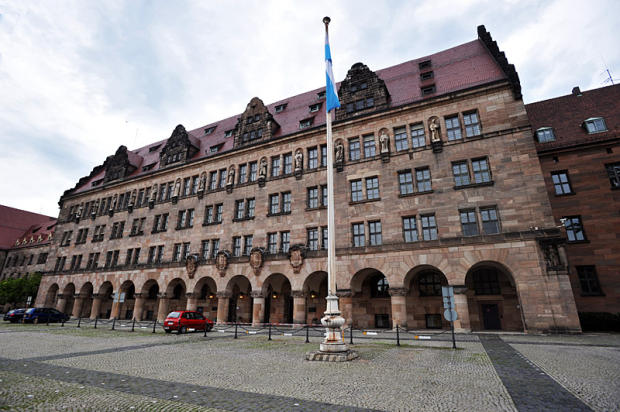Roth Experience: Nuremberg
Just 15 miles north of Roth, Nuremberg is a city of half a million with a rich and checkered history that starts with great Gothic and Romanesque churches, builds on the genius of artists like Albrecht Durer, and survives the dark clouds of its Nazi past.
A modest trading center in 1050, Nuremberg became a free town in the Holy Roman Empire in the 13th century. In the 15th and 16th centuries, Nuremberg became a center for artists, craftsmen and intellectuals and was a thriving center of commerce.
In the 20th century, Nuremberg became a key city of Hitler's rise to power and was the site of the infamous 1933 Nazi rallies.
Today, it's a peaceful tourist Mecca filled with elegant churches, fine art and vibrant markets, galleries and a thriving concert scene.
Photo gallery by Timothy Carlson
Panoramic view of the rooftops of old Nuremberg, including the impressive 13th century Gothic church of St. Lorenz, the 13th century Romanesque church of St. Sebald, and the 14th century Gothic Frauenkirche (Women's Church) which presides over the bustling Hauptmarkt. where fresh food can be had for fair prices.
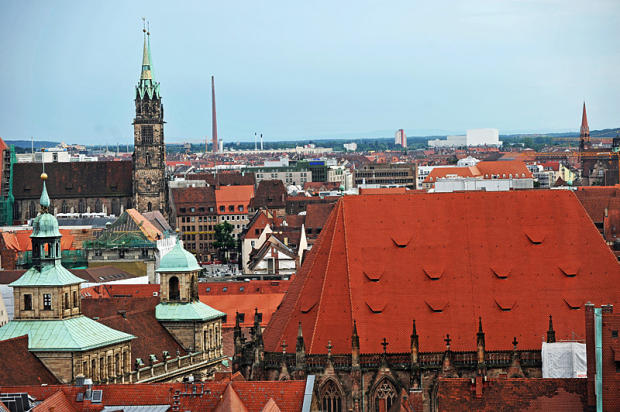
Albrecht Durer, the brilliant Renaissance painter and engraver whose vision of Adam and Eve in Eden is one of art's greatest masterpieces, lived in the house on the right.
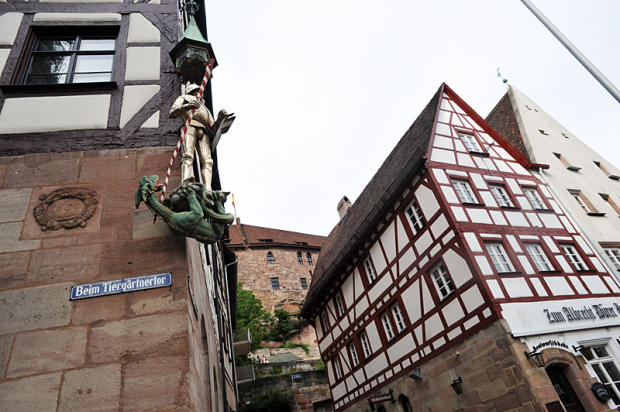
Father on bicycle tows his child past Nuremberg's famed Beautiful Fountain, a 20th century replica of a 14th century masterpiece, a carved 62-foot-high spine wrapped in a Renaissance grill of many figurines. Lore has it that good luck will follow those who turn a golden ring three times on the grill. Overlooking this scene and a nearby open air market is the magnificent 14th century Women's Church.
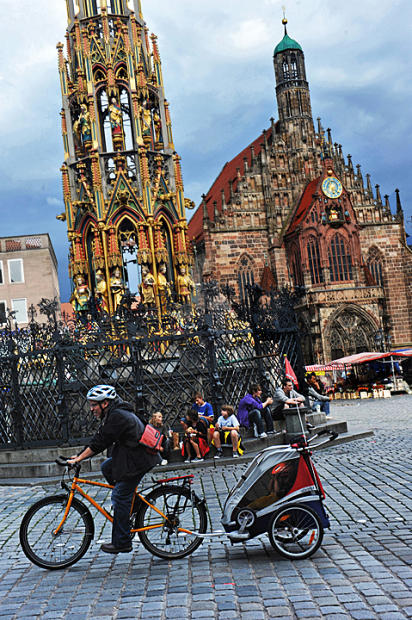
The 14th Century Hospital of the Holy Spirit stands in the center of town . One of the largest hospitals in the Middle Ages, it sits atop a bridge over the Pegnitz River. Today it is a combination old folks home and restaurant.So please excuse the occasional slow server…
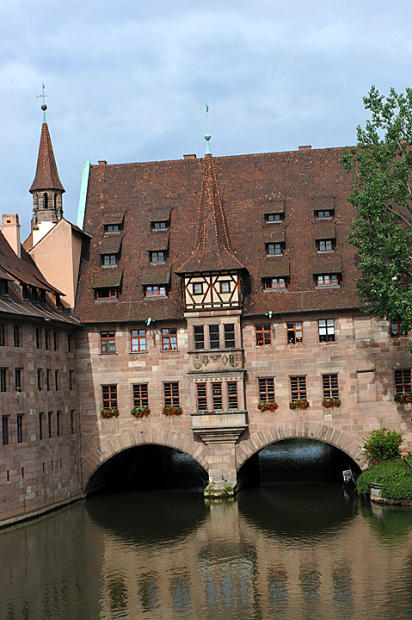
In a city steeped in deep religious reverence, modern marketing presents an edgy modern fashion brand – Christ – complete with sexy women models.
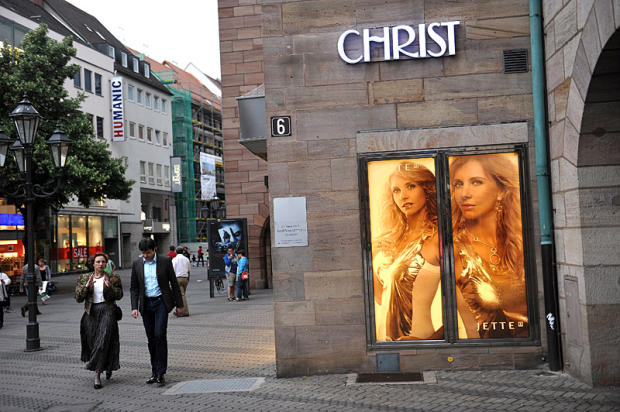
Businessman waits at the doors of St. Lorenz Church, adorned with 13th century sculptures.
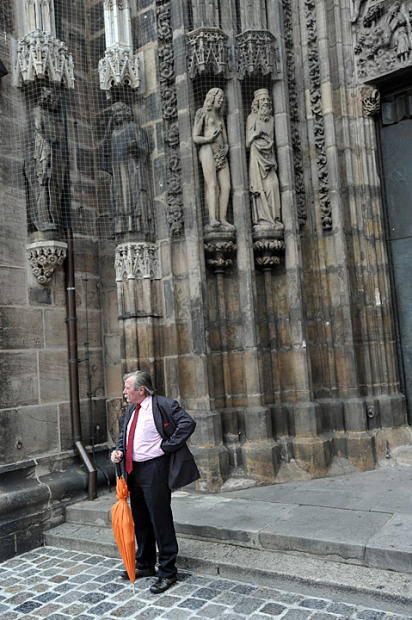
The magnificent Gothic Church of St. Sebald, which contains the relics of the saint in a silver coffin, and a gleaming, large deep-toned organ.
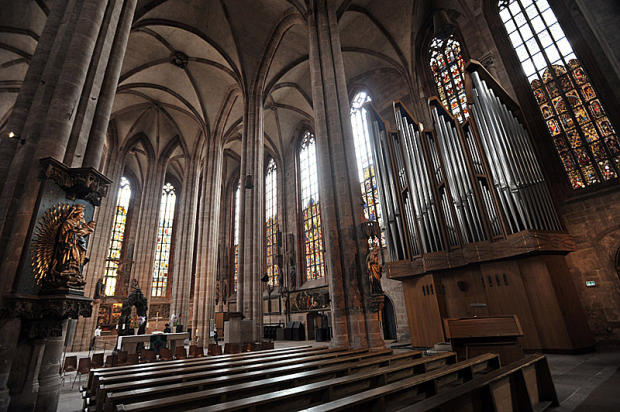
A re-enactor about to participate in a ceremony atop Nuremberg's castle redoubt which sits atop the city.
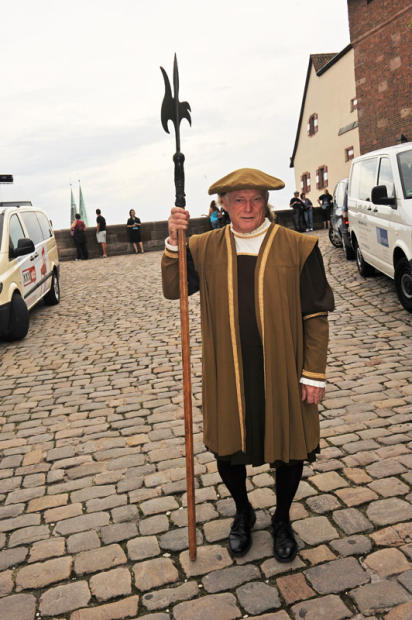
A girl plays with a balloon, oblivious to and unafraid of the scary gargoyles behind her.
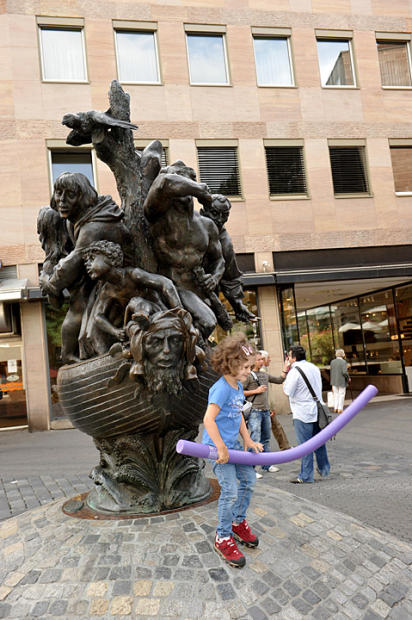
Troubador plays Bavarian folk music to a young listener in a tunnel leading the Nuremberg city castle. Great acoustics.
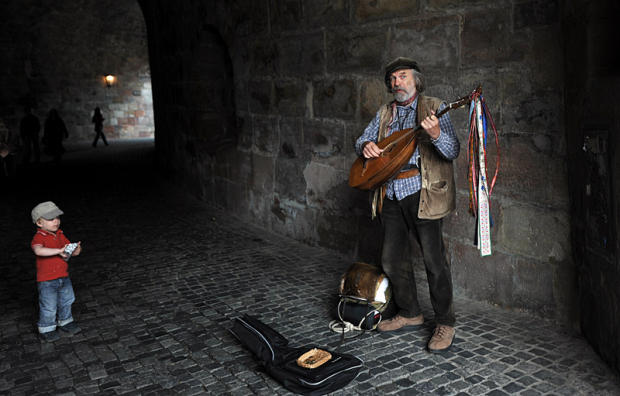
Typical traffic – ubiquitous bicycles and pedestrians criss-cross in all directions in Altes Nuremberg. Elaborate pictures and symbols of ancient heralds decorate the building behind them.
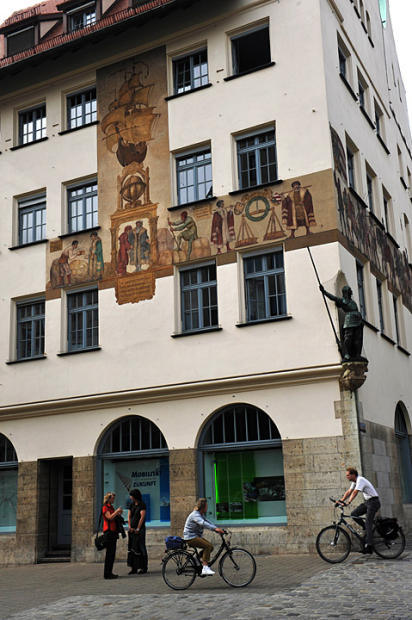
A couple walk the scenic streets of Nuremberg's old city.
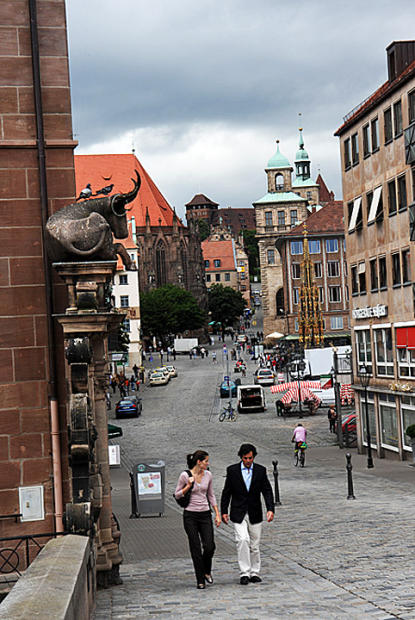
Friends walk together past one of Nuremberg's many sculpted doorways
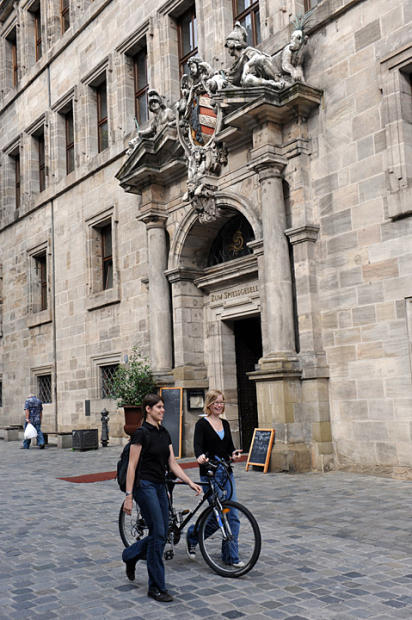
Three young metal aficionados regroup in downtown Nuremberg.
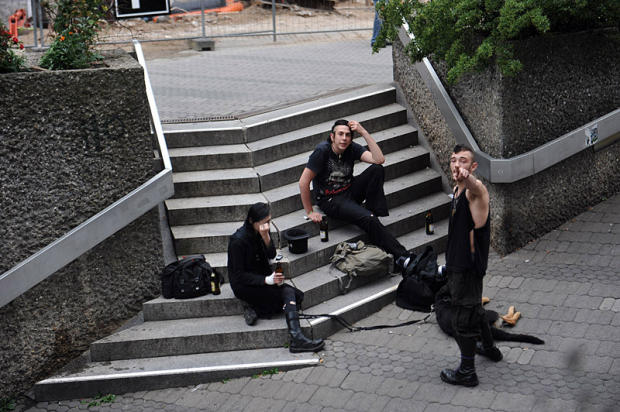
Life along the sleepy Pegnitz River at the center of town.

Stately swan in the Silbersee, a pastoral pond on the site of the former Nazi Party Rally Grounds.
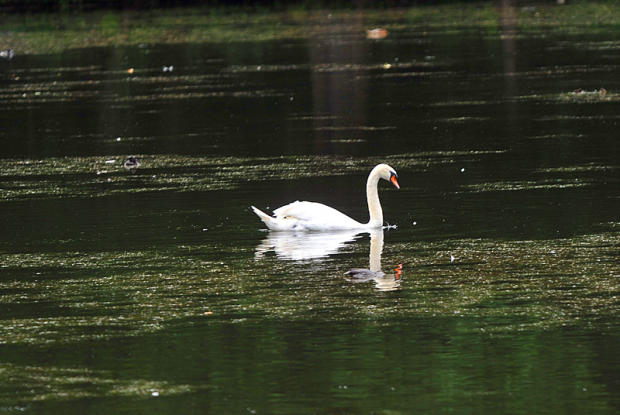
Students get historical lectures about the infamous Nuremberg Nazi Rallies held at this site. In 1933, the year he rose to power, Hitler engineered a rally of hundreds of thousands of Nazis, recorded in a film of slick propaganda by filmmaker Leni Riefenstahl, "Triumph of the Will."

The now-crumbling tribune overlooking the Zeppelin landing field area, used as a centerpiece of the 1933 Nazi rallies. When Hitler spoke, the tribune was an imposing white platform designed by architect Albert Speer to present an image of power. When the Allies took control of the city after Germany's defeat in 1945, they blew up Nazi symbols of swastika and the golden eagle that crowned the tableau.
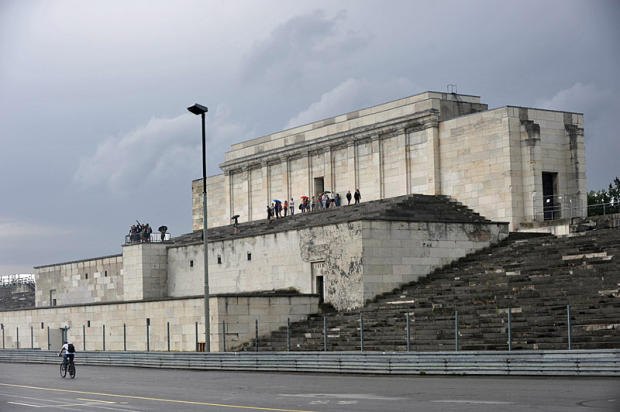
Now under re-construction, the wall of the 1929 Hall of Honor War Memorial to the German soldiers who lost their lives in World War One became a hallowed Nazi shrine. In 1933, Hitler addressed a huge crowd from its steps. Today, that rally ground has been transformed into a peaceful green park with trees, flowers and ponds.
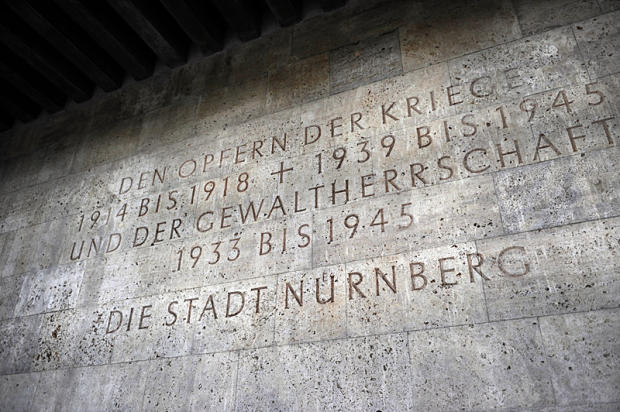
The Palace of Justice at 110 Furtherstrasse is the site of the post World War 2 Nazi war criminal trials made famous in the 1961 movie Judgment at Nuremberg. Martin Bormann, was among those executed. Hitler's Deputy Rudolph Hess got life. Hitler's architect Albert Speer got 20 years. Infamous SS chief Hermann Goering cheated a death sentence by committing suicide.
